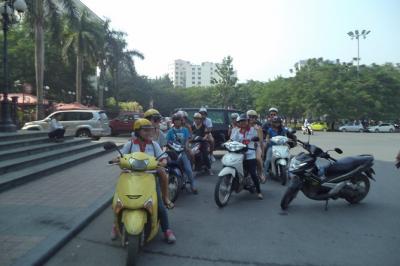Information / History & Culture
Hanoi - Looking back to the History and Culture
Hanoi, also spelled as Ha Noi, is the capital and province-level municipality or thanh po situated on the banks of Red River in Northern Vietnam.
Hanoi’s history dates back to prehistoric times when the region around it was a chosen by the Chinese conquerors as a political center. Ly Thai To, the very first ruler of the Ly Dynasty Vietnam chose Hanoi as his capital. It was then called Thang Long which translated as the Rising Dragon. It remained the capital till the early 1800s when the Nguyen, the last Vietnamese dynasty shifted the capital to Hue in South. The city was named differently several times, one of those being Dong Kinh given during the Later Le Dynasty that ended during the later 1700s. The name was later corrupted to Tonquin by the Europeans. The name ‘Tonquin’ was used to refer to an entire region during the French colonial period. Ha Noi, which means “between two rivers”, was the last and final name given to the city by the Nguyen Dynasty.
The French rule saw Hanoi rising in importance and becoming the administrative center and capital of French Indochina in the year 1902. This happened basically for two reasons; one that Tonkin was closer to China and French wanted to expand their power and second was the rich mineral resources that Tonkin had. Even during the Japanese occupation of the territory from 1940-1945, it remained as the administrative center. Following the surrender by Japanese forces in 1945, the country under the leadership of Ho Chi Minh established Hanoi as the capital of the Democratic Republic of Vietnam (North Vietnam). However, the Vietnam War that saw massive bombings by the United States led to the collapse of South Vietnam. This led North Vietnam to extend its control over all of Vietnam and in 1976, the Socialist Republic of Vietnam was proclaimed with Hanoi as its capital.
Hanoi’s culture can be said to be contemporary in nature. The city has transformed from a commercial center to an industrial and agricultural city. Its industries are manufacturers of plywood, chemicals, textiles, machine tools, electric generators, and motors. Fruits and vegetables, cereals, rice, and industrial crops are grown in the surrounding region.
Hanoi has suffered a great loss of its historical monuments and centuries-old palaces at the hands of civil war and foreign aggression, but there still remains parts of its culture and history intact in several monuments of ancient and scenic importance. One such scenic marvel is the Lake Hoan Kiem or the Lake of the Restored Sword. Its most important historical sites are that of Co Loa Citadel, a third century CE marvel, the Mot Cot (One-Pillar) Pagoda, the temple of Literature dedicated to Confucius, and last but not the least the Temple of the Trung Sisters. Hanoi hasn’t lagged behind in the books of UNESCO World Heritage sites. In 2010, the Central Sector of the Imperial Citadel of Thang Long, and eleventh-century marvel was declared as such. Its other cultural institutions include the Army Museum, the Revolutionary Museum, the University of Hanoi, and the National Museum.
Featured Tours In Hanoi
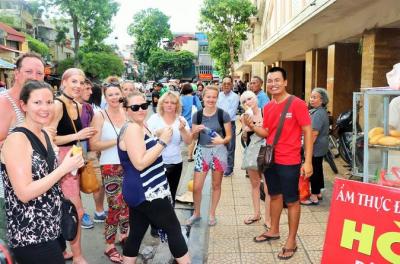
Hanoi Street Food Walking Tour
$29 ^
per person
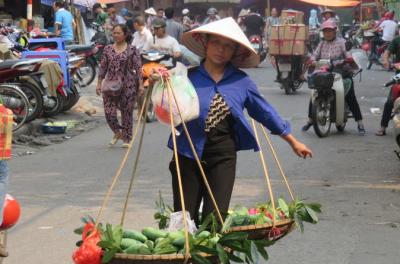
Half-Day Hanoi Food Tour
$40 ^
per person
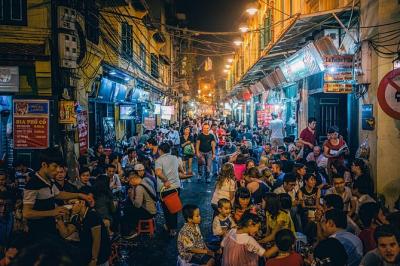
Full-Day Hanoi City Tour
$36 ^
per person
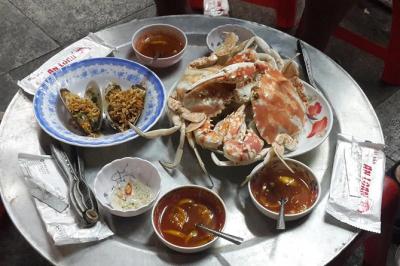
Hanoi Street Food Tour Including Seafood Hotpot Dinner
$65 ^
per person
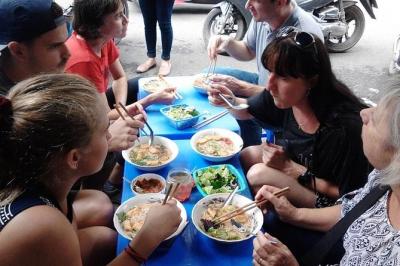
Hanoi Food Walking Tour
$25 ^
per person
